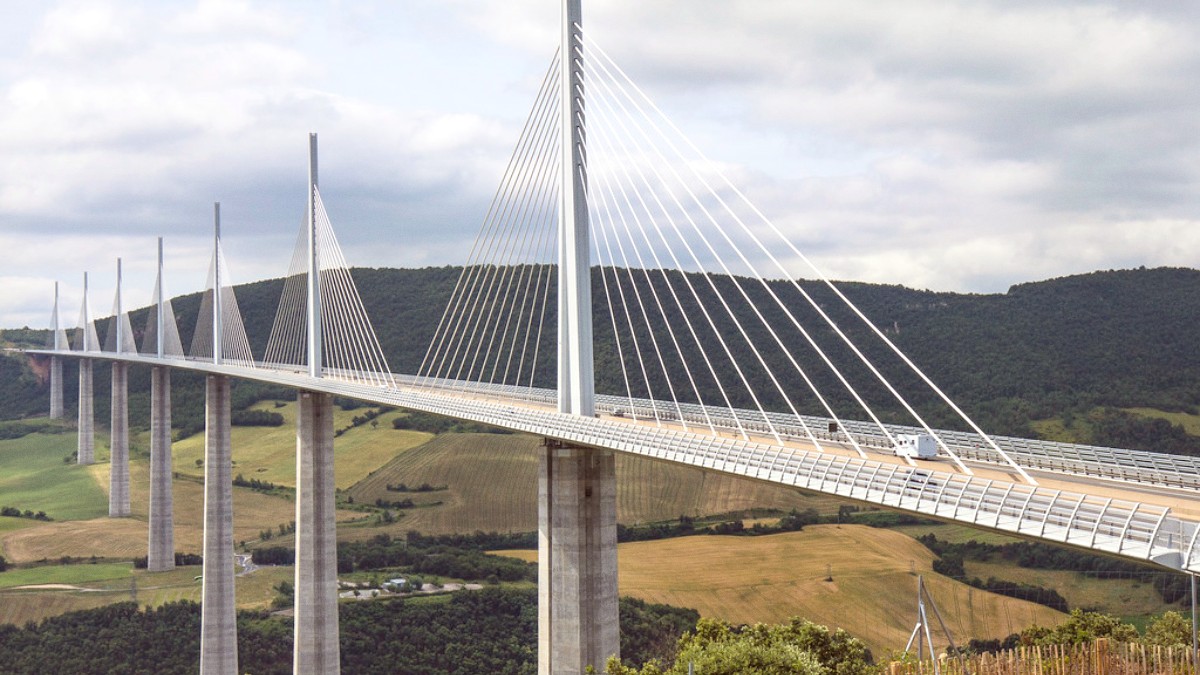
France
Spring (April-May): Mild temperatures. Averages range from 8-18°C (46-64°F). Rainfall is moderate, and humidity levels are comfortable. Mornings can feel cool, but afternoons often bring pleasant warmth. This period sees the landscape greening, with wildflowers beginning to bloom in the volcanic areas.
Summer (June-August): Warm to hot conditions. Average temperatures range from 15-26°C (59-79°F). Days can reach over 30°C (86°F). Occasional thunderstorms, often in the late afternoon, offer relief from the heat. Humidity is generally moderate. This is the prime time for outdoor activities and extended daylight hours.
Clermont-Ferrand sometimes experiences "foehn" winds. These dry, warm winds descend from the mountains, causing rapid temperature changes, especially noticeable in winter.
Summer afternoons can bring thunderstorms. These are typically short-lived but can be intense. Always check the local forecast before planning outdoor activities.
July-August
Warmest weather, ideal for hiking the volcanoes, exploring lakes, and outdoor events.
Larger crowds, peak prices for accommodation and flights. Reservations might be needed.
April-June, September-October
Pleasant temperatures for sightseeing and hiking without intense summer heat. Fewer crowds mean relaxed visits.
Weather can be unpredictable, with cooler days or more rain. Some smaller attractions might have reduced hours.
November-March
Fewest tourists, lower prices for flights and hotels. Opportunities for winter sports in nearby mountain resorts.
Cold weather and shorter daylight hours. Snow and ice can limit some outdoor activities.
Late spring (May-June) and early autumn (September-October) offer the best conditions for hiking and outdoor activities. Temperatures are comfortable, and the natural scenery is at its prime. You avoid the peak summer heat and crowds.
The shoulder seasons (April-June, September-October) generally present the most pleasant weather for walking and exploring the city's historic quarters.
December to March in nearby Massif Central resorts, like Super Besse or Le Mont-Dore.
Plan your trip around the International Short Film Festival in February if interested.
May-June and September-October for comfortable temperatures and natural scenery.
April-June and September-October for pleasant weather for walking and exploring.
France is part of the Schengen Area, which simplifies travel for many nationalities.
Citizens of many countries, including the USA, Canada, Australia, the UK, Japan, South Korea, and most South American nations, can enter France for tourism or business without a visa for up to 90 days within any 180-day period across the entire Schengen Area.
Carry printed and digital copies of all important documents, including flight and hotel reservations.
Prices here are generally lower than in major French cities like Paris, offering good value.
The official currency in France, and thus in Clermont-Ferrand, is the Euro (€, EUR).
These estimates provide a general idea and can vary based on your personal choices.
In France, the service charge ("service compris") is included in restaurant and café bills by law. Tipping is not mandatory.
France has high standards for public health and safety, but awareness of common concerns remains useful.
No specific vaccinations are required for entry to France. Ensure your standard vaccinations (e.g., MMR, Diphtheria-Tetanus-Pertussis, Polio, Chickenpox, Flu) are up-to-date.
Consult your doctor or a travel clinic at least 4-6 weeks before your trip for personalized advice.
They may recommend Hepatitis A and B for most travelers. Rabies vaccination might be suggested for long-term travelers or those with extensive wildlife contact.
France boasts an excellent public healthcare system, known for its high quality of care.
If you are a citizen of an EU, EEA country, or Switzerland, carry your European Health Insurance Card (EHIC). This card access to state-provided healthcare at a reduced cost or free of charge during your temporary stay.
For all travelers, especially non-EU/EEA citizens, purchasing comprehensive travel insurance is strongly recommended. This covers medical emergencies, hospitalization, and emergency medical evacuation.
The main hospital in Clermont-Ferrand is the Centre Hospitalier Universitaire (CHU) Gabriel Montpied.
Tap water is safe to drink throughout Clermont-Ferrand and all of France. Bring a Reusable water bottle to refill.
Food hygiene standards are very high in France. Restaurants and food establishments operate under strict regulations.
You can confidently enjoy street food, market produce, and restaurant meals.
Clermont-Ferrand is generally a safe city with low crime rates. It does not have areas tourists must strictly avoid.
Awareness of common concerns is useful for your well-being.
In summer, use Sunscreen with a high SPF, wear a hat, and stay hydrated by drinking plenty of water.
Ticks are present in rural and forested areas. Wear long sleeves and pants, and use an Insect repellent. Check your body thoroughly after outdoor activities.
Blisters or sprains from walking uneven terrain are common. Pack a Basic first aid kit containing Band-aids and pain relievers.